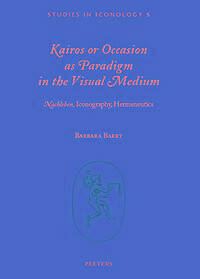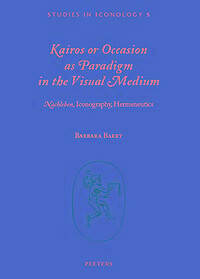
- Afhalen na 1 uur in een winkel met voorraad
- Gratis thuislevering in België vanaf € 30
- Ruim aanbod met 7 miljoen producten
- Afhalen na 1 uur in een winkel met voorraad
- Gratis thuislevering in België vanaf € 30
- Ruim aanbod met 7 miljoen producten
Zoeken
€ 74,45
+ 148 punten
Omschrijving
The meaning of tearing and splitting as a life-, love- and wisdom-generating event (for example, the tearing of the temple curtain) is profoundly rooted in the visual and literary 'bodies' of ancient and Christian thought. The primordial cosmogonic split is always sudden, is always sharp (like a knife), appears as a flash (sudden and all encompassing) and is experienced through the whole bodily sensorium (in shivering, bliss, sigh, wind, breath). The split is the epiphany of radical change, revolution and the transition beyond. The Greek deity Kairos embodies this mystery. The reach of Kairos can be detected in the theory of rhetoric (Sophists vs. Aristotle (385-322 BC)), in humanistic politics, in postmodern theology and in contemporary time-management. Iconographical studies have treated Kairos's Nachleben in Byzantine and Latin visual traditions where the god is conflated with Fortuna and Occasio. This essay addresses the impact of Kairos and its iconographic Nachleben from a literary and historical perspective, and further considers Kairos as a new art historical paradigm. Indeed, Kairos can offer us alternative hermeneutics to reconceive the image as chronotopos, as epiphany and as intercession.
Specificaties
Betrokkenen
- Auteur(s):
- Uitgeverij:
Inhoud
- Aantal bladzijden:
- 141
- Taal:
- Engels
- Reeks:
- Reeksnummer:
- nr. 5
Eigenschappen
- Productcode (EAN):
- 9789042933798
- Verschijningsdatum:
- 5/10/2016
- Uitvoering:
- Paperback
- Formaat:
- Trade paperback (VS)
- Afmetingen:
- 170 mm x 239 mm
- Gewicht:
- 430 g

Alleen bij Standaard Boekhandel
+ 148 punten op je klantenkaart van Standaard Boekhandel
Beoordelingen
We publiceren alleen reviews die voldoen aan de voorwaarden voor reviews. Bekijk onze voorwaarden voor reviews.








